Comparing the cost of Europe’s royal dynasties is akin to comparisons between apples and oranges. Each family is unique, and each government has a different way of paying for them. Some royal budgets cover the cost of maintaining palaces, staff and security; others are limited to annual stipends to individual kings or queens.
Tax is paid by some European royals but not others. Some countries are highly transparent, providing detailed breakdowns of how public money is spent on individual royals. Others are more opaque, with royals supplementing an official government lump sum with other quasi-private sources of income. One thing, at least, is clear: European royal families come with vastly different price tags.
United Kingdom

Family name/House: The Windsors
Monarch: King Charles III
Approximate public funding: £86m-£122m
The most famous of Europe’s grand hereditary families, and probably the richest and most powerful too. Many Britons wrongly assume their monarch fulfils purely ceremonial roles, and has no real power. However, an archaic procedure known as “consent” allows the monarch, or heir, to secretly vet laws before they are approved by the elected members of parliament.
It was once used by Queen Elizabeth II to persuade ministers to change the law to conceal her “embarrassing” private wealth from the public.
There is no breakdown of how much individual members of the royal family receive for their official duties. The monarch does receive a lump sum – the sovereign grant –which has risen dramatically over the last decade. The UK taxpayer gave £86.3m towards the cost of the British royal family last year. Of that, £34.5m was spent on refurbishing Buckingham Palace as part of a 10-year restoration programme. The core cost to the taxpayer, for the royal household’s operating costs, travel and maintenance on other residences, was £51.8m.
Controversially, the new king and his heir, Prince William, also receive income from two hereditary estates – the Duchy of Lancaster and the Duchy of Cornwall – which pay no corporation tax or capital gains tax. There has been a centuries-old debate over whether that money – currently more than £40m a year – should really go to the public. Buckingham Palace insists the revenue is “private income” buts says part of it goes towards official duties.
From 1993, the monarch agreed to pay “voluntary” income tax, although they are exempt from inheritance tax, meaning the late queen passed her fortune to the king without any deductions for the public good.
Quick Guide
What is Cost of the crown?
Show

What is Cost of the crown?
Cost of the crown is an investigation into royal wealth and finances. The series, published ahead of the coronation of King Charles III, is seeking to overcome centuries of secrecy to better understand how the royal family is funded, the extent to which individual members have profited from their public roles, and the dubious origins of some of their wealth. The Guardian believes it is in the public interest to clarify what can legitimately be called private wealth, what belongs to the British people, and what, as so often is the case, straddles the two.
Spain
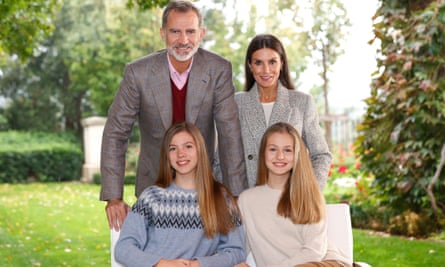
Family name/House: The Borbóns (or Bourbons)
Monarch: King Felipe VI
Approximate public funding: £7.4m
Spain’s royal family ranks among the most beleaguered on the continent. Marred by accusations of corruption, extramarital affairs and a precipitous fall from grace, the former king Juan Carlos I abdicated in 2014 and eventually left the country.
Investigations into his financial dealings were eventually shelved and the former king’s lawyers noted he had been cleared of “any illicit conduct susceptible to criminal reproach”. However, the scandals led to an intense debate among Spaniards about their royal family, who this year will receive €8,431,150 (£7.4m) from the state budget.
Seeking to present a new era of transparency, Juan Carlos’ son, King Felipe VI, made public his personal assets of €2.6m (£2.28m). He renounced his personal inheritance from his father in 2020 and removed him from the royal family’s payroll.
From the public grant, Felipe receives €269,296 (£236,214.10) in an annual personal allowance, while his wife, Queen Letizia, gets €148,105 (£129,911). His mother, Juan Carlos’s estranged wife, Sofía, receives an annual stipend of €121,186 (£106,299). Spanish royals pay tax on their income.
Sweden
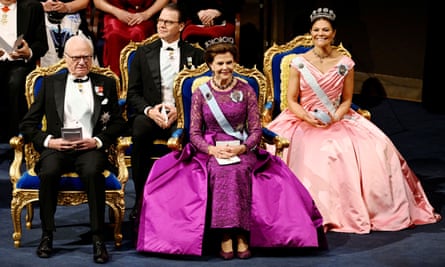
Family name/House: The Bernadottes
Monarch: King Carl XVI Gustaf
Approximate public funding: £11.5m
Sweden was the first monarchy to change its rules on succession from agnatic primogeniture (the eldest male son) to absolute cognatic primogeniture (the eldest child). The change was passed by the Swedish parliament in 1980, and led to Crown Princess Victoria becoming heir apparent instead of her brother Prince Carl Philip.
The Swedish royal court received a total grant of 147.9m Swedish krona (£11.5m) in 2021 (the latest figure available). Of this, 73.9m kr (£5.8m) covered the cost of the king’s official duties, travel, staff and stables. Within this, 13.6m kr (£1m) was allocated to the king and other titled royals who carry out official duties to cover costs of a “non-official nature which are connected with, or caused by, the royal position”, according to the court’s annual report.
Individually, Carl Gustaf and his wife, Silvia, get 8m kr (£625,423) between them, while Victoria and her husband collect 4.5m kr (£351,800), and Carl Philip and his wife get 1.1m kr (£85,995). In 2019, the king stripped five of his grandchildren of their royal titles in order to reduce the total cost of “appendages” to serving royals.
Belgium
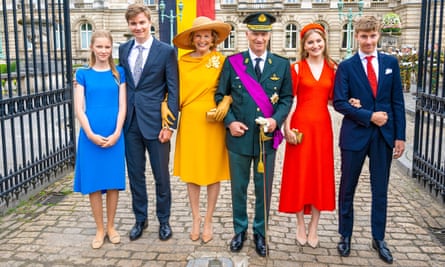
Family name/House: van België, de Belgique, or von Belgien (or “of Belgium”)
Monarch: King Philippe
Approximate public funding: £12.5m
Like the British royals, the Belgian monarchy ditched its previous surname, Saxe-Coburg-Gotha, in 1920 in response to fierce anti-German sentiment after the first world war. The new name – van België (Dutch), de Belgique (French) or von Belgien (German) – means “of Belgium” in the country’s three official languages.
The Belgian monarch has had no direct power since 1951, although the king has kept the right “to be consulted by his ministers, to encourage them, and to caution them”.
King Philippe, or Filip, is granted an annual civil list to cover the cost of performing official duties. The amount is established at the start of each reign. Philippe, who acceded to the throne in 2013, received €12.5m (£11m) in 2021, according to the Belgian government’s latest report. The amount is set to increase with the consumer prices index measure of inflation. As well as the £11m paid to Philippe, other members of the royal family receive yearly “emoluments”. Philippe’s father, King Albert II, who abdicated in 2013, receives €980,000 (£862,635); Albert’s eldest child, Princess Astrid, receives €341,000 (£300,161), slightly more than her younger brother, Prince Laurent, who gets €327,000 (£287,838). Their half-sister, Princess Delphine, who had Albert’s paternity recognised by the court in 2020, does not receive any royal funding. The payments are subject to income tax.
Denmark
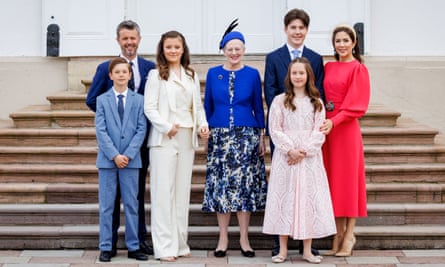
Family name/House: The Glücksburgs
Monarch: Margrethe II
Approximate public funding: £14m
On average, each Dane cycles 1.4km a day, according to the Denmark tourist board, and those cyclists include the royal family. Frederik, the crown prince and heir apparent, competed in the Tour de Storebælt cycle race near Copenhagen; he and his wife, Mary, ferry their children around town on a cargo bike.
Queen Margrethe II, 82, Europe’s longest-serving monarch, receives about 91.1m kroner a year (£10.7m) in civil list payments. The government says this covers expenses “relating to staff, operation of the royal household, administration and properties as well as the queen’s expenses of a more private nature”.
Separately, Frederik receives 22,434,876 kroner (£2.64m) a year, 10% of which goes to his wife. Frederik’s younger brother, Prince Joachim, the sixth in line to the throne, gets 3,965,400 kroner (£467,045) a year. All the money is received tax-free.
Queen Margrethe has stripped Joachim’s four children – Nikolai, Felix, Henrik and Athena – of their royal titles in a move designed to slim down the size of the family. The palace said the queen wanted to “create a framework for the four grandchildren, to a much greater degree, to be able to shape their own existence without being limited by the special considerations and obligations that a formal affiliation with the royal house as an institution implies”.
Luxembourg
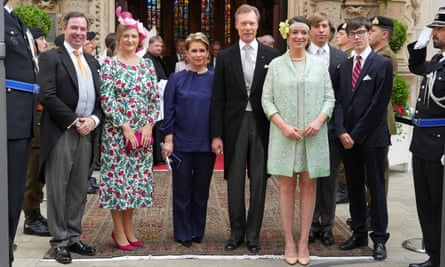
Family name/House: Grand Ducal Family of Luxembourg
Monarch: Grand Duke Henri
Approximate public funding: £16.9m
The Windsors are not the only royals to deliver a Christmas speech. The grand duke’s message is broadcast from the yellow room in the Grand-Ducal Palace every Christmas Eve.
The latest government budget for 2023 shows payments to the Maison du Grand-Duc (House of the Grand Duke) totalled €19,257,155 (£16.9m). Of that, €15.9m (£13.9m) was spent on day-to-day expenses, and €3.3m (£2.9m) on capital projects, such as renovations.
In addition to the civil list payments for staffing costs, the grand duke and his heir receive endowments for personal expenditure: in 2022, Henri received €523,103 (£460,381) and Crown Prince Guilluame received €217,985 (£191,848).
From July, legislation drafted by the prime minister, Xavier Bettel, will peg future changes to the personal allowances to the public sector. Bettel has said the centralisation of royal funding will provide more transparency, after anger at the blurring of public and private budgets. “Now we have a monarchy that moves out of the 19th century and into the 21st century,” he said.
Norway
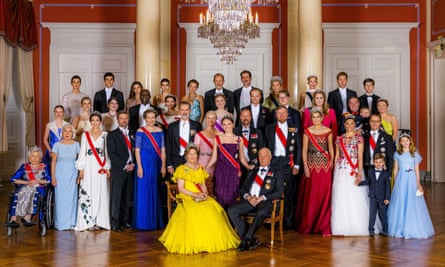
Family name/House: The Glücksburgs
Monarch: King Harald V
Approximate public funding: £24m
The Norwegian monarchy dates back more than 1,000 years. Harald Fairhair is regarded as the first Norwegian king, who united several “petty kingships” into a single realm in about 885. The current king belongs to the House of Glücksburg, which has held the Norwegian throne since 1905.
The royal court’s latest annual accounts say the Norwegian royal family received 312m Norwegian kroner (£24m) in 2022 in the civil list. It is unclear how this is distributed. A previous report from 2015 states that “the king and queen and the crown prince and crown princess all receive an allowance” to cover “the management, operation, maintenance and development of the private properties and households, as well as appropriations for private expenses and official attire”.
The Netherlands

Family name/House: van Orange-Nassau
Monarch: King Willem-Alexander
Approximate public funding: £44.2m
The Dutch royals are among the monarchies exempt from paying income tax. This year, the prime minister, Mark Rutte, rejected opposition demands to scrap the exemption. His government proposed an annual royal budget of €50.2m (£44.2m) for 2023.
That includes €1,035,000 (£911,162) for King Willem-Alexander, and a further €5.37m (£4.7m) to pay for his staff and other expenses. His wife, Máxima, collects €411,000 (£361,823), and an additional €700,000 (£616,245) for staff and expenses. The king’s mother, Beatrix, who abdicated in 2013, receives €1.73m (£1.52m).
Princess Amalia, the 19-year-old heir to the throne, has been granted €1.72m (£1.51m), of which €307,000 (£270,235) is salary and the rest is for staff and expenses. However, she has waived her right to the allowance, saying it would make her feel “uncomfortable” to accept it “until I incur high costs in my role as Princess of Orange”.






